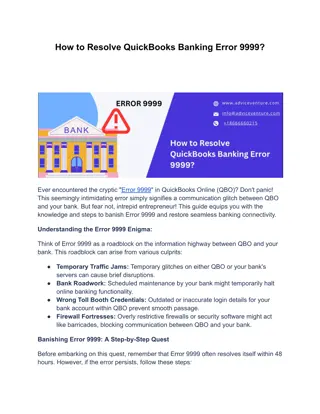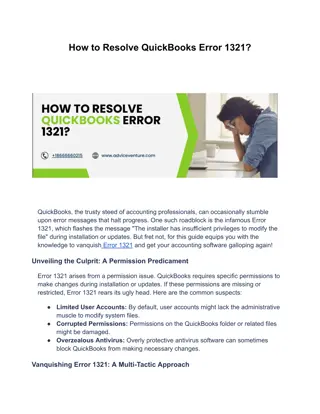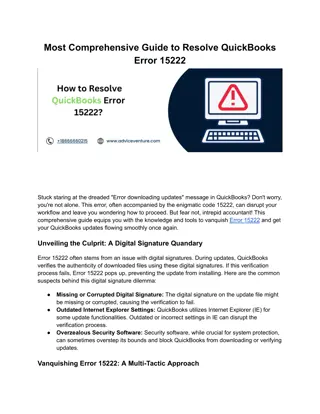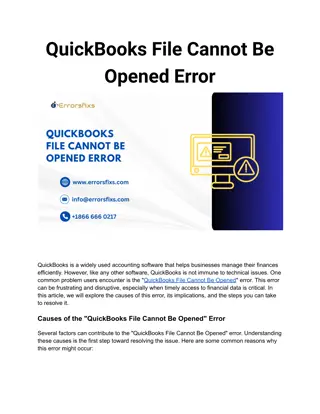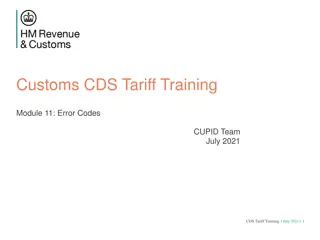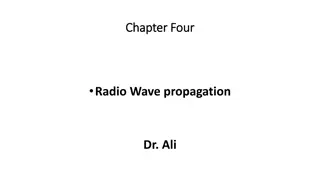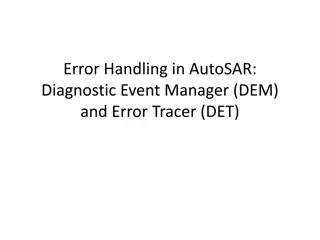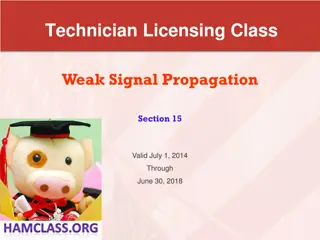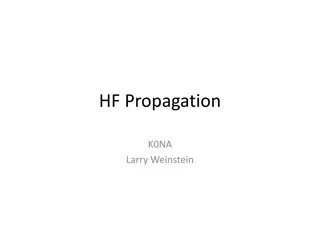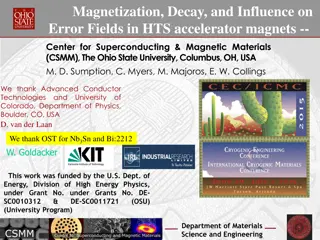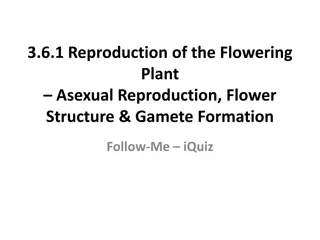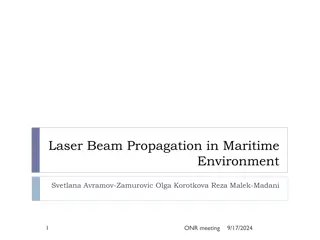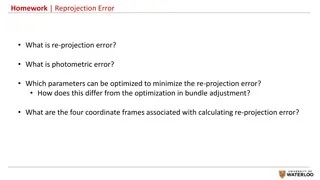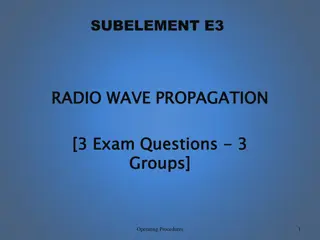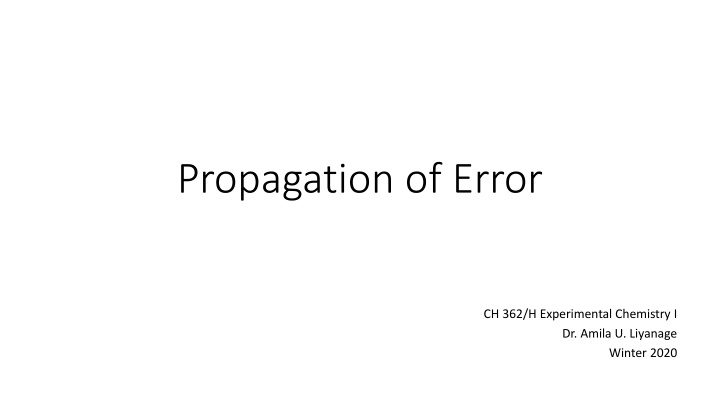
Error Propagation in Experimental Chemistry
Learn about error propagation techniques in experimental chemistry, including methods for estimating error, determination of calorimeter constants, and handling uncertainties in measurements. Explore examples and step-by-step analyses to understand how errors are propagated in chemical experiments.
Download Presentation

Please find below an Image/Link to download the presentation.
The content on the website is provided AS IS for your information and personal use only. It may not be sold, licensed, or shared on other websites without obtaining consent from the author. If you encounter any issues during the download, it is possible that the publisher has removed the file from their server.
You are allowed to download the files provided on this website for personal or commercial use, subject to the condition that they are used lawfully. All files are the property of their respective owners.
The content on the website is provided AS IS for your information and personal use only. It may not be sold, licensed, or shared on other websites without obtaining consent from the author.
E N D
Presentation Transcript
Propagation of Error CH 362/H Experimental Chemistry I Dr. Amila U. Liyanage Winter 2020
Determination of Calorimeter Constant (C) ??????+ ??? ????? ? ? =???? ? = ????= ? ? ? ??????+ ??? ????? ???? , ???????? ????, ???????? ? = ?????? ??????+ ??? ??? ????? ????? ???? , ???????? ????, ???????? ? = m = mass, E = molar energy of combustion at constant volume, T = temperature
Experimental error If we have replicates, Mean ( ?) variance (S2) estimated standard deviation of the mean (Sm) 95% Confidence interval ( ) See CH 361 course web page for a refresher When we only have one trial, Propagation of error
Propagation of error: It s how we estimate error (~when n = 1) Addition/Subtraction 2+ ?? 2+ ??2 ??= ?? ? = ? + ? ? Multiplication/Division 2 2 2 ?? ? ?? ? ?? ? ??= ? + + ? =?? ? Average ?1 ?2+ ?2 ?2+ + ?? ?2 ? 1 ? =?1+ ?2+ + ?? ? ?= ? https://sites.science.oregonstate.edu/~gablek/CH361/Propagation.htm
Uncertainties (S) ?????? ??????+ ??? ??? ????? ????? ???? , ???????? ????, ???????? ? = Masses: 0.0003 g require to propagate errors from weighing by difference measurements E: 1 in the last significant figure (e.g.: EMeSal = 24690 10 J/g) T: either 0.004 C or use propagation of error from least-squares analysis (use LINEST to find S for slope and intercept) require to propagate error to obtain uncertainty in T.
Step 1: Step 1: Additive Additive analysis analysis (error in m) (error in m) Measurement Value Uncertainty Empty cap (g) 12.6012 0.0003 Cap + Methyl salicylate (g) 13.6621 0.0003 ??????= 13.6621 12.6012 ? = 1.0609 ? (?.????)?+(?.????)? ???????= ? = ? + ? ? Uncertainty/error in mass after weighing by difference ???????= ?.???? ?+ ?? ?+ ?? ? ??= ?? ??????= 1.0609 0.0004 ? Perform similar analyses for mFe and msoot
Step 1: Step 1: Additive Additive analysis analysis (error in m) (error in m) Measurement Value Uncertainty Before Ignition Weighing paper (g) 0.4175 0.0003 WP + Iron wire (g) 0.4341 0.0003 After Ignition Weighing paper (g) 0.4148 0.0003 WP + Iron wire (g) Cap + soot (g) 0.4217 12.6026 0.0003 0.0003 ? = ? + ? ? Cap w/o soot (g) 12.6013 0.0003 ?+ ?? ?+ ?? ? ??= ?? ????= ? ??????= ?
Step 2: Step 2: Multiplicative Multiplicative analysis analysis (error in (error in m m E E) ) Measurement Value Uncertainty mFe (mg) EFe (J/mg) 9.7 0.6 5.858 0.001 ???= 9.7 ?? 5.858 ?/?? = 57 ? ? ? ?.? ?.? ?.??? ?.??? ????= ?? + ? =?? ? ????= ? ? ? ? ???= 57 4 ? ?? ? ?? ? ?? ? ??= ? + + Perform similar analyses for qMeSal and qsoot ??????= 24690 10? ?, ?????= 32.64 0.01 ? ??
Either, consider the uncertainly (S) in T as 0.004 C Next steps or Start with SE for slope and intercept from LINEST to obtain S in T (see slide 11) Additive analyses to obtain error in qobs and error in T. ? =???? ??????+ ??? ????? ???? , ???????? ????, ???????? ?= Multiplicative analysis to obtain error in C. ? =???? ?
https://support.office.com/en-us/article/linest-function LINEST function in Excel =LINEST(known_y's, [known_x's], [const], [stats]) Note: Since LINEST returns an array of values, we must select a range consisting of 5 rows and 2 columns, enter the above formula, press Ctrl + Shift + Enter.
Error of T from LINEST ???????????? ?? ??? ?? 3 ? ? = ?? + ? ????, ????????= ????? ??? + ????????? Multiplicative analysis to obtain error in mx. Followed by an additive analysis to obtain error in y or Tlow, forecast. Needs another additive analysis to obtain error in T.


